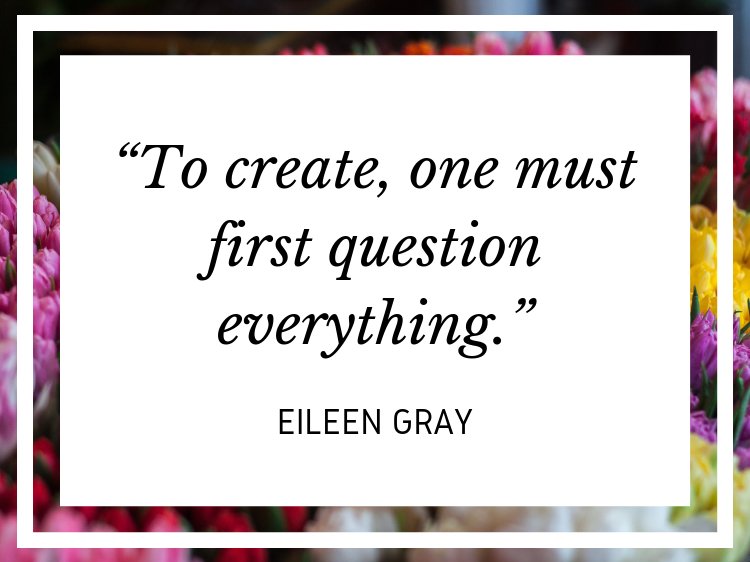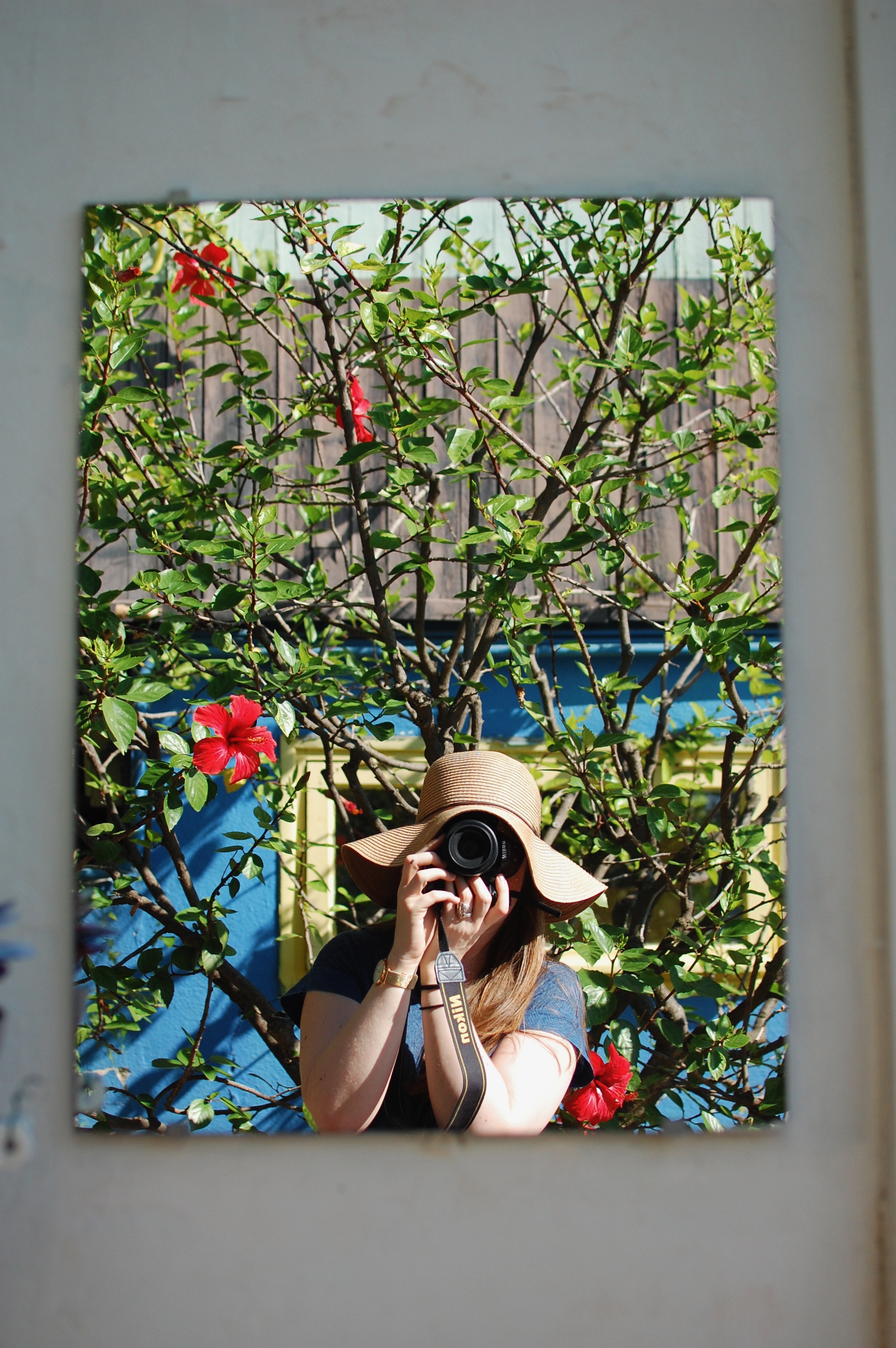Unconventional Mentor no. 31 - Eileen Gray
“To create, one must first question everything.”
Quote: “To create, one must first question everything.” - Eileen Gray
I’ve been going on holiday to The South of France for over 20 years and one of the reasons I keep going back is because there is so much to explore down there. Every time I go I find a new place to visit, and a new person I didn’t know about. A few years ago, I heard about E1027, the villa that was designed by Eileen Gray who I hadn’t heard of. Researching her and visiting the villa I discovered a wonderfully talented woman, whose work and contribution to the world of architecture and design have been massively underrated.
Visiting E1027 in Roquebrune-Cap-Martin, South of France
If you know anything about modern furniture design then you will probably recognise her work, the Bibendum Chair and the E1027 adjustable table are very well known and still being sold by the store Aram today. In the 1970s, Zeev Aram met with Eileen Gray to discuss her work and they now hold the worldwide rights to manufacture her designs. I used to work for The Conran Shop, and I know these pieces of furniture, but despite that I didn’t know anything of their designer and the obscurity of her work was one of Eileen Gray’s biggest frustrations in her lifetime.
Eileen Gray was born in County Wexford, Ireland in 1878. She went to The Slade School of Art in London when she was 22 and shortly after she moved to Paris. Her design career began by making furniture using the technique of lacquer that she learnt from the celebrated Japanese artist Seizo Sugawara. In 1922 she opened her own gallery, Jean Désert, where she sold her designs Over time Gray moved from furniture to interior design to finally studying architecture. She never formally trained as an architect but received tuition from the man who would also become her lover, Jean Badovici.
Villa E1027 and the view from the garden
“A house is not a machine to live in. It is the shell of man, his extension, his release, his spiritual emanation.”
E1027 is one of the three buildings she designed that were built and it is a modest villa (by The South of France standards) that is situated right on the coast of Roquebrune-Cap-Martin. The building was designed for two people (Eileen Gray and Badovici) to live there and the rooms make the most of the views and the light. The house was owned by Badovici, so when the relationship between him and Eileen Gray broke down, she moved out to live in another house she was building, Tempe à Pailla just further round the coast at Menton.
The building may not have been known about today had it not been for its controversial visitor, the architect Le Corbusier. He was friends with Badovici who invited him to come to the stay in the house that Eileen Gray had designed, and he encouraged him to paint murals on the wall. This was hugely disrespectful to Eileen Gray, as part of her philosophy was that the wall of the building and the use of the furniture were designed together. So if she hadn’t designed a mural on the wall, there wasn’t meant to be one there. If you read up about the house you will find that Le Corbusier greatly admired the work of Eileen Gray so it was a complete act of vandalism and ego on his part to think that he could just paint huge murals on the wall. If that wasn’t bad enough, when an article featuring the murals was published in a design magazine, the murals were credited to Le Corbusier, but the design of the house wasn’t credited to Eileen Gray. It was assumed that either Le Corbusier or Badovici had designed it and neither of them corrected the error. After she left E1027 Eileen Gray became more and more reclusive and possibly even agoraphobic. Her removal from the public eye and the lack of proper crediting of her work may have contributed to her being less well known. In an odd twist of fait, Le Corbusier died in 1965 swimming off the coast of Roquebrune-Cap-Martin so it is likely that the last thing he saw was E1027.
“We must ask nothing of artists but to be of their own time.”
Eileen Gray was very much ahead of her time in her design, always experimenting with new materials and techniques. In the 1970s she was experimenting with celluloid, and just before her death was working on a shocking pink screen that wouldn’t have looked out of place in the punk era. Despite her working all through her life, there was a huge gap in her work being known, which started after Badovici died and ended when she was re-discovered in the 1970s after Joseph Rykwert published an article about her. Her work is getting the prominence it deserves today.
“The future projects light, the past only clouds”
E1027 has been saved from ruin and is being restored by the Cap Moderne group. This year marks 100 years since the villa was built and I am so pleased that it has been saved and is being restored. I am hoping to go out to the South of France again this year so I will be making a trip back to the Villa to see how the restoration is coming along. If you have a few ££ to spare then you can buy a piece of Eileen Gray’s work from Aram.
Mentor advice: Make sure you get the credit your work deserves.
The advice that I take from Eileen Gray is to not be afraid to take credit for the work that you do. Eileen Gray was a very talented designer and her work stands up to the test of time, but her reputation didn’t match the quality of her work. There were numerous times where her work was not given the prominence it deserved or appropriated by other people, and her story isn’t a one off. Many of the women I have featured in this project have not received the credit they were due. This wasn’t the fault of Eileen Gray and it is so frustrating that it has happened to so many women and is watch out to learn from.
I am not doing work that has the significance that Eileen Gray’s has, but I do owe it to myself to make sure that I am credited for the work that I do. This means that I need to make sure that I celebrate my work, and not be afraid to take credit for it. No one else is invested in my career as I am, so I need to make sure that I am controlling the stories about my work and telling people what I am good at and the contribution I have made. In the past I have thought that if I do good work, it will speak for itself but what I have come to realise is that I also need to tell people how good the work is. In my coaching business this means asking people for testimonials for how my coaching has helped them and not being afraid to share that with potential new clients. In an office situation it might look like highlighting your successes to your manager and making it really clear about the impact that you have. Wherever you do your work, make sure that you get the credit you deserve.
To find out more about Eileen Gray visit the website about her here and her villa E1027 here


